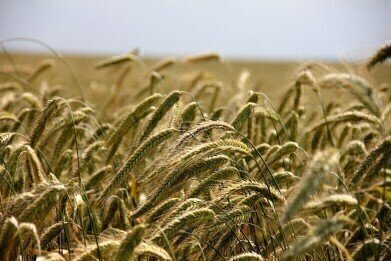Air Monitoring
Why Are Nitrous Oxide Levels Rising?
Dec 05 2020
A new study from a team of scientists Auburn University in Alabama, USA, has highlighted how nitrous oxide (N2O) levels are rising at an unprecedented rate. According to their findings, published in the scientific journal Nature last month, N2O concentrations have shot up by 20% since the Industrial Revolution, with much of that increase having occurred in the last 50 years alone.
The widespread practice of spreading nitrogen-based fertilisers on agricultural crops is believed to be the biggest contributing factor to the rise. If allowed to continue unchecked, N2O is such a damaging greenhouse gas (GHG) that it could reverse all of the progress made towards achieving the goals set out at the 2016 Paris Climate Summit and result in a global temperature increase of far greater than the 2°C ceiling agreed upon.
Farming to blame
When it comes to agriculture, the methane emissions generated by dairy farming normally claim most of the headlines, but those produced by the spread of fertilisers is no less of a concern. Indeed, over the last 40 years, anthropogenic emissions of N2O – which are largely dominated by the use of nitrogen in agriculture – have shot up 30% to a current all-time high of 7.3 tera-grams of nitrogen each year.
In their analysis, the team from Auburn University examined all sources of N2O in 21 naturally occurring and anthropogenic sectors between 1980 and 2016. Their findings showed that N2O has risen from 270 parts per billion in 1750 to 331 parts per billion in 2018. That increase spiked in the last half century, indicating that human-induced emissions from the booming agricultural industry are to blame.
Some countries more culpable than others
The research concluded that the biggest contributors of N2O are to be found in Africa, South and East Asia and South America. Emissions produced by nitrogen-based fertilisers were the chief culprit in China, India and the USA, while the use of manure as a natural fertiliser in places like Africa and South America was responsible for their contribution.
Conversely, Europe has witnessed a decline in N2O emissions in both the agricultural and chemical industries. It’s thought this has come about thanks to a combination of tighter regulations, a voluntary migration towards more sustainable farming habits and the introduction of an emissions trading initiative. However, the successes of one region will not offset the losses of others.
A serious issue
It’s certainly been true that when it comes to GHGs, the monitoring of methane and carbon dioxide (CO2) emissions is normally the main focus of attention from an environmental perspective. However, the fact that N2O is 300 times more powerful as a GHG than CO2 and remains in our atmosphere for well over a century could mean that it could potentially be even more devastating than either of its two more infamous counterparts.
“This new analysis calls for a full-scale rethink in the ways we use and abuse nitrogen fertilizers globally and urges us to adopt more sustainable practices in the way we produce food, including the reduction of food waste,” explained Dr Josep 'Pep' Canadell, co-lead author on the paper. “These findings underscore the urgency and opportunities to mitigate nitrous oxide emissions worldwide to avoid the worst of climate impacts.”
Digital Edition
IET 34.2 March 2024
April 2024
Gas Detection - Biogas batch fermentation system for laboratory use with automatic gas analysis in real time Water/Wastewater - Upcycling sensors for sustainable nature management - Prist...
View all digital editions
Events
Apr 30 2024 Melbourne, Australia
Apr 30 2024 Birmingham, UK
May 03 2024 Seoul, South Korea
May 05 2024 Seville, Spain
May 06 2024 Minneapolis, MN, USA


















